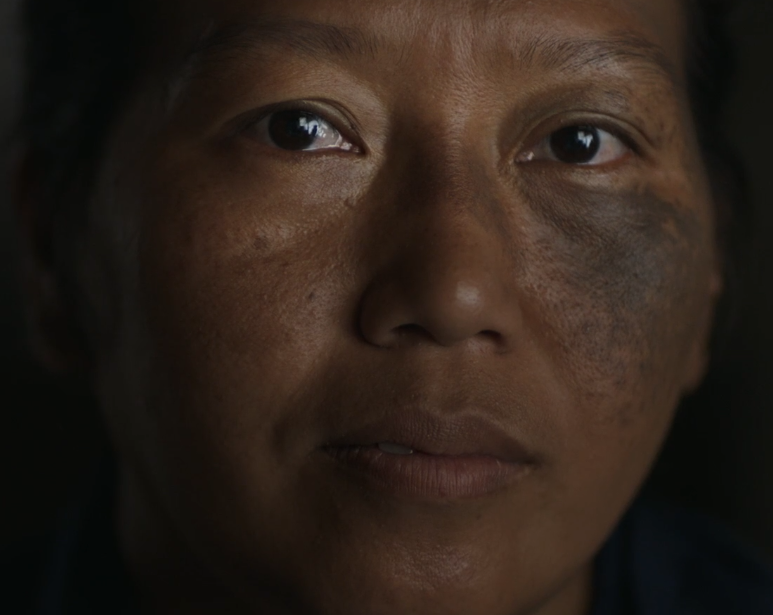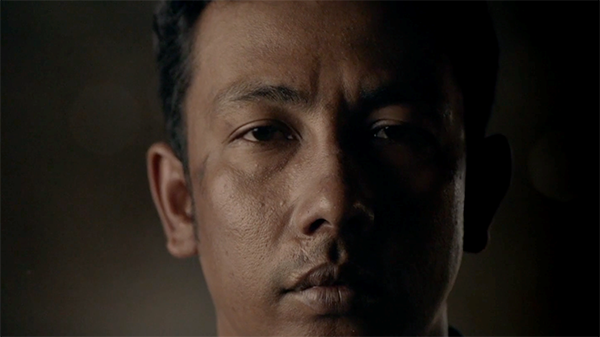Award-winning ‘Ghost Fleet’ unmasks human rights abuses in fishing industry
November 5th, 2019 | IHP, SIT Study Abroad
IHP alumna Shannon Service drives change through documentary film-making

Onboard a small vessel in the South China Sea, an activist snaps a headshot of a middle-aged Thai man with her smartphone and posts it to Facebook with the question: Does anyone recognize this man? Her network springs to action, and in short order she tracks down the number of the man’s father. With little fanfare, she dials the number and hands the phone to the man. Separated for years by slavery and international borders, neither father nor son seem quite able to believe that, after all this time, they are hearing one another’s voice.
The scene appears toward the end of Ghost Fleet, an award-winning documentary directed by International Honors Program alumna Shannon Service and Jeffrey Waldron. The film features Thai activists who track down victims of forced labor in the fishing industry and reunite them with their families, sometimes decades later.

At the center of this work is Patima Tungpuchayakul, creator of the anti-slavery NGO Labour Rights Promotion Network Foundation. Service and Waldron follow Patima as she investigates remote corners of Indonesia, identifying victims and risking reprisals along the way.
Ghost Fleet tells its story with kinesthetic exuberance. Interviews are often in closeup. Aerial shots render ships ghostly, tiny islands of humanity in an expanse of dead water. Actors recreate key memories of the captive men in lush cinematography.
“What [Jeffrey Waldron] and I both wanted was to craft something that really brought the audience in, almost in a Hollywood film sort of a way. So not necessarily a lot of talking heads,” Service said. “You’re actually with our heroes, Patima and Tun Lin, as they are embarking on a mission to find men.”

Press-ganging random men into an illicit fishing fleet might seem like something out of the Georgian era, but it is an all-too-common practice in Southeast Asia. Many of the men featured in Ghost Fleet were abducted off the street, waking to find themselves hundreds of miles offshore. Conditions on these boats are abysmal, with brutal working hours, frequent accidents, and beatings meted out to anyone who offers resistance. To minimize the risk of escape, boats would stay at sea for long periods of time, offloading their catch to a “mothership” that circulated among the fleet.
“One of the key parts of it is that there's these shuttle boats that go between the fishing boats and port,” Service said. “They go out and they pick up the fish and bring it in from multiple boats, and then they bring all the fish to port, and essentially it's like fish laundering in a way because you lose the ability to track which boats caught what.”
I think that's part of the power of IHP. As I was learning about the scientific and economic underpinnings of how that narrative happened ... I was living with people who I really connected with who were being impacted super negatively by all of this.
At the root of the brutality is an ecological problem: Overfishing has forced boats to range far offshore in search of fish, and companies struggle to find willing laborers for the long and harsh excursions.
To evade authorities, black market fishing outfits often base their operations in Indonesia, and it is there that many forced laborers from Thailand and Myanmar ultimately find their way ashore. In the film, Patima’s crew patrol small villages along the coast, asking whether anyone living there might be Thai. In short order, they find men who managed to escape their captors. Yet, after years of living in Indonesia, many have families and seem to have abandoned any hope of returning home.

Asked whether they might like to see their parents and siblings again, some appear visibly pained and say that, for now, they cannot leave due to their responsibilities as breadwinners. Others make the difficult choice to travel to Thailand with Patima, promising their new families that they will return soon.
Still others do not survive. The activists visit a rural graveyard populated with the graves of forced laborers, men who either died in captivity or succumbed to the harsh conditions of solitary life in a new country.
***
That year really changed the course of my interior landscape, my thinking, and ultimately my life.
Service had led a global life prior to the International Honors Program. Her mother’s family was Mexican-American, which meant frequent travel to Mexico as a child. Her father’s side of the family was one of diplomats. Before IHP, Service had been to Senegal, China, and a number of other countries. Still, she describes her time with IHP as transformative.
“That year really changed the course of my interior landscape, my thinking, and ultimately my life,” she said.
Traveling to India, New Zealand, Mexico, and the Philippines with IHP brought her face-to-face with the environmental and human rights consequences of global consumer culture and “unregulated, rampant capitalism,” a system driving a finite planet toward multiple, interrelated disasters. The program made visible systems in which she had always existed but, until that point, never consciously identified.
“It was just a narrative that I didn't really see before. I just sort of accepted it,” Service said.
“I think that's part of the power of IHP. As I was learning about the scientific and economic underpinnings of how that narrative happened—that it's a human creation; it has a historical trajectory—I was living with people who I really connected with who were being impacted super negatively by all of this.”
Leaving IHP, Service knew that she wanted to do what she could to change that narrative, but she wasn’t yet certain how best to do so. Then she got an internship with YES! Magazine, a nonprofit that publishes “solutions journalism.” The experience showed her that journalism was one potential means of changing the world for the better.
It was as a journalist that Service first explored the topic of forced labor in Southeast Asia’s fishing industry. Her 2012 story for NPR’s Morning Edition pushed the topic into the public eye and was followed by articles in several other publications that built on her reporting.

Returning to the story for Ghost Fleet felt different, Service said.
“Making the film and putting it out there is a much more emotional experience,” she said. “It’s much more about trying to connect to the heart and the journeys of these main characters in a very human way.”
Emotions are at the heart of Ghost Fleet. The camera lingers on the faces of activists and trafficked men alike, long enough for the audience to feel some inkling of characters’ grief and determination. Comparatively little of the film’s runtime is devoted to examining the structural factors that drive and sustain the industry.
But then, in the final moments, Ghost Fleet confronts audiences with their own culpability in the suffering that has gone before. An extended shot traces the supply chain of a filet of fish backward from an immaculate western grocery store, through docks and a transoceanic voyage, past processing facilities, all the way to the small vessels manned by forced laborers that haul the creature from the sea. It’s the perfect coda to a painful yet often sumptuous work of art.
